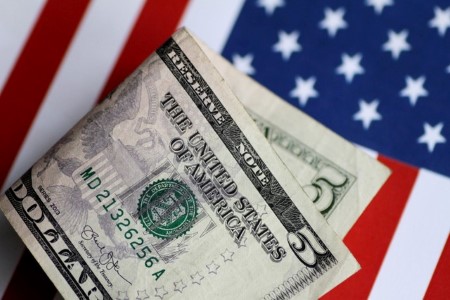




Philippines Trade Update: Trade trajectories trend along
 DOWNLOAD
DOWNLOAD

Policy Rate Updates: Double cut finale
 DOWNLOAD
DOWNLOAD

Monthly Economic Update: One for the road
 DOWNLOAD
DOWNLOAD


US yields slump as rate cut outlook weighs

NEW YORK – US Treasury yields sank on Tuesday as the prospect of an interest rate cut next month loomed large ahead of Federal Reserve Chair Jerome Powell’s remarks on Friday at a central bank gathering in Jackson Hole, Wyoming.
The federal funds futures market has fully priced in easing by the Fed at the September meeting, with a 71% chance of a 25-basis-point cut, according to LSEG calculations.
Traders have also priced in about 99 bps of cuts by the end of the year, down from roughly 150 bps a few weeks ago at the height of the panic earlier this month driven by the soft US nonfarm payrolls report for July and the sudden unwinding of the yen carry trade.
Since that turbulent period, the US numbers have depicted an economy that is unlikely to tip into recession anytime soon, even as the Bank of Japan has moved to calm investor nerves about the carry trade.
Investors remained focused though on the Jackson Hole meeting starting Friday, at which Powell is scheduled to speak.
“You have to see a change in Fed policy, at least in their language. I think the Fed is going to tell markets that, yes, rates are going to go lower, but at a slower pace than expected,” said Byron Anderson, head of fixed income at Laffer Tengler Investments in Scottsdale, Arizona.
The slower pace in easing is based on economics, he noted.
“If you look at US GDP (gross domestic product), it was higher than expected. The only real outlier is the unemployment rate going up,” said Anderson.
“But even the inputs on unemployment over the last few weeks were temporary. So you could see unemployment start trending back down. Economically, we’re not seeing the US economy fall off a cliff.”
In afternoon trading, the benchmark 10-year yield slid 4.9 bps to 3.818%. So far this month, it has dropped nearly 28.7 bps, on track for its biggest monthly decline since December.
BULL STEEPENER
US 30-year yields fell to a two-week low of 4.054%, and were last down 4.7 bps at 4.068%.
On the front end of the curve, the two-year yield, which reflects interest rate expectations, sank 7 bps to 3.998%.
The closely watched US two-year/10-year yield curve narrowed its inversion, or steepened, to minus 18 bps.
The curve bull-steepened on Tuesday, which means short-dated rates fell more sharply than longer-dated ones. Yield curves typically steepen ahead of a Fed easing cycle, as investors price in the expectation that rates on the front end have peaked and the Fed’s next move would be a rate cut.
A steeper curve shows longer-dated yields are higher than those on shorter maturities, reflecting a normal upward slope and suggested that investors are being compensated more for the risk of holding longer-term securities.
The market pricing in a more moderate rate cut pace is based primarily on the last Federal Open Market Committee meeting and the weak labor market for July, said Jim Barnes, director of fixed income at Bryn Mawr Trust in Berwyn, Pennsylvania,
“The Fed needs to be careful though. If they don’t deliver what the market is anticipating, and let’s say they try and keep no rate cuts at all, that’s when financial conditions could tighten up again,” Barnes said, and investors could see a repeat of the volatility witnessed earlier this month.
Market participants are also watching out for Wednesday’s preliminary revisions to US data that includes the nonfarm payrolls reports from April 2023-March 2024.
“If you see the revisions on the BLS (Bureau of Labor Statistics) numbers come out worse than expected, that’s going to be a big one,” said Laffer Tengler’s Anderson. “And the Fed is going to have to stand up and actually start looking to speed up rate cuts.”
(Reporting by Gertrude Chavez-Dreyfuss; Editing by Jonathan Oatis)
This article originally appeared on reuters.com





 By Reuters
By Reuters